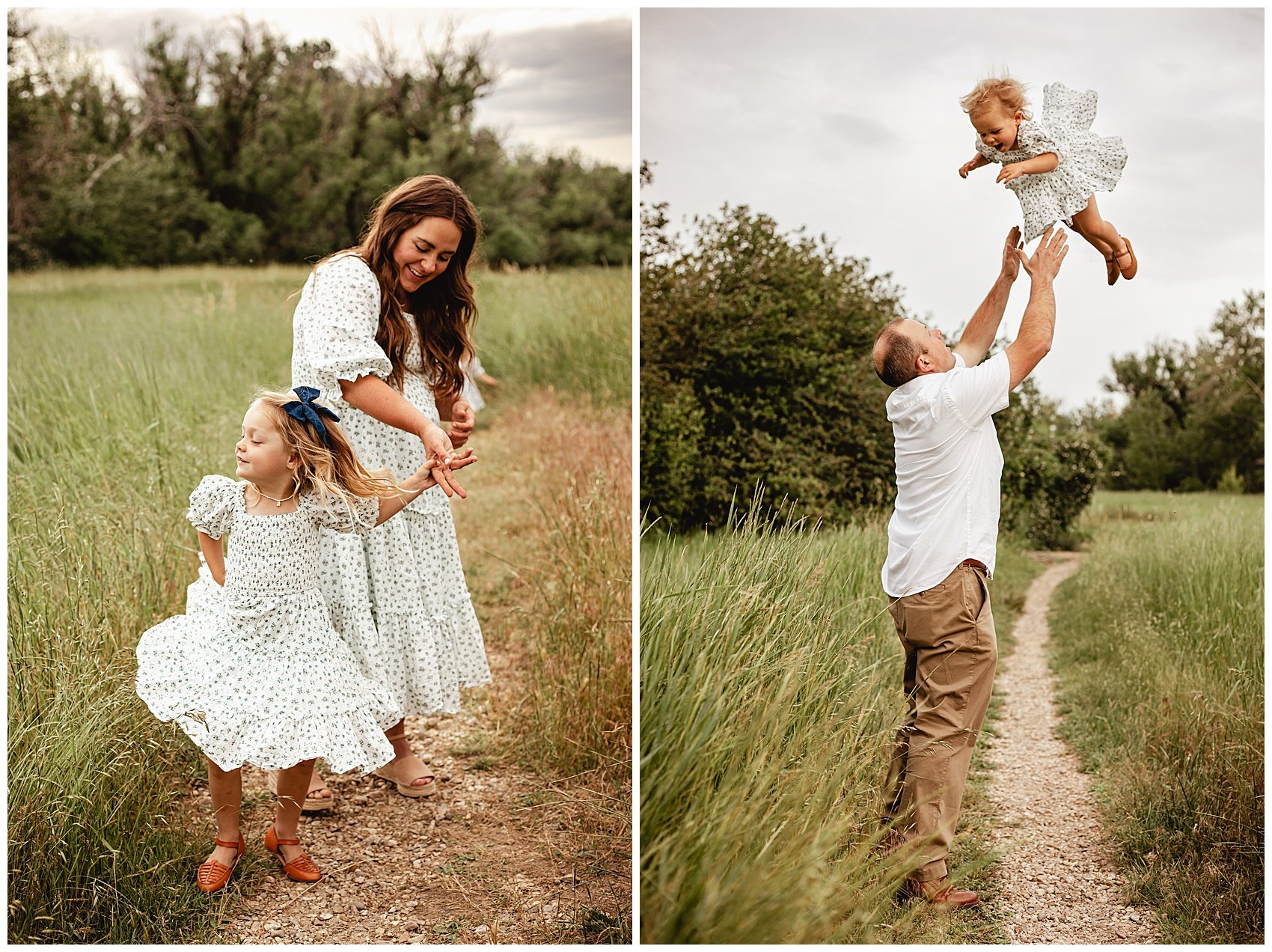6 Tips to Nail Focus
Imagine with me for a moment that you are a family photographer who just wrapped up a family photography session on a beautiful summer day. The sun was shining with a few scattered clouds that made for a beautiful sunset. Your subject was an adorable family of 5 with 3 young children who had a lot of energy. You played games with them, did active posing to help captivate their attention, and ultimately you won them over so you are now their new best friend.
You get home from the shoot exhausted, but with a full heart. You keep telling yourself, “I can’t believe I get to do this for my job!” You can’t wait another minute to download the images and start taking a peek at what you captured. You open the files on your computer and your heart begins to sink as you see photo after photo that is out of focus.
Sound familiar? Even as an experienced photographer, I still encounter the photo or two (or lets be honest probably quite a few per session) that are out of focus. Why is it so hard to get sharp images? Is there a secret to ensuring you are capturing your subjects in focus?
Getting an in-focus image (despite recent camera technology) is not quite as simple as putting your focal point on the subject and snapping the photo. In order to have an in focus image, you must understand the different components that affect the focus of an image. These components include shutter speed, aperture, focal length, focal point, focusing mode and camera lens technology. I will go into detail on how all of these components affect focus below.
So let’s get started exploring the reasons an image might be out of focus and how to get it right.
Shutter Speed
The shutter speed was too low for the amount the subject was moving, or if the subject was still the motion blur was the result of the camera shaking. The faster the shutter, the faster motion will be frozen in the image. As a starting point, I like to adhere to these basic guidelines for minimum shutter speeds:
Minimum shutter speed to freeze objects motion
1/250 for walking
1/500 for running or moving erratically (best for kids in motion)
1/2000 for sports or objects moving in a car
I also wouldn’t go below 1/200 without using a tripod because of the possibility of camera shake since it is difficult for a person to hold the camera perfectly still.
2. Aperature
The next component that affects focus is aperture. An image can be out of focus if the aperature was too low (wide open) for the number of subjects in the image or how close the photographer was to the subject, or the subject was moving and moved out of the depth of field (area of the scene that is within focus). To understand how aperture affects focus, I like to use the diagram below. The more wide open the aperture, the shallower your depth of field and the less of the whole scene that is in focus.
If the aperture is the reason why your image (or the subject of your image is not in focus), the following tips might resolve the problem.
As much as possible, keep all subjects in the photo on the same focal plane or as close to the same focal plane as possible. When posing your clients, glance at them from the side to ensure that nobody’s face is sticking too far out past the others.
If you can’t keep your subjects on the same focal plane (for example you have a child sitting in the parent’s lap), focus on the person who in the front. This is because focus falls backward, and so you are more likely to have all the subjects in focus if you focus on the person at the front.
The closer you are to your subject the narrower the depth of field at the same aperture, and so you want to increase the aperture as you get closer to your subjects, unless you want parts of the subject/image to remain out of focus
You may want to increase your aperture in these scenarios:
When taking photos of a large group of people or multiple rows of people, increase the aperture to ensure they all fall in the focal plane. One rule I have heard is to set the aperture equal to or greater than the number of subjects in the photo, e.g. 3 people aperture 3.2 or greater, but I find that there are too many other variables for this rule to apply every time. It varies a lot with how close you are to the subjects and how many rows you have.
For subjects in motion, you may want to increase the aperture, resulting in a wider depth of field. This will help ensure that as the subject moves, they don’t move too far outside of the depth of field.
3. Focal Length
The focal length of the lens is another component to consider when ensuring you have in focus images. The longer the focal length, the narrower the depth of field at the same aperture. For example, a 85mm focal length at 2.8 aperture will have a narrower depth of field or area of the image that is in focus than a 35mm at 2.8 aperture.
4. Focus Points
Assuming we have the correct shutter speed and aperture for our subject, one thing that could be still causing images to be out of focus is if the photographer is focusing and recomposing the image. This is where you place your focal point on your subject and push the shutter halfway to lock focus, but then slightly move the camera to recompose where the subject lands in your frame. The slight change in movement of the focal point off your subject is causing the subject to fall out of focus. When I first started in photography, I kept my focal point in the center of my viewfinder, but often I wanted to focus on my subject’s eyes which are at the top of the image. So for every photo, I would focus on the subject’s eyes, then recompose to frame the subject, but I soon realized that even that slight movement of the camera was enough to cause either my subject to fall out of focus, or to cause camera shake resulting in a blurred image.
Instead of focusing and recomposing, you should start manually selecting and moving around the focal point in the viewfinder. Different cameras have different numbers of focal points and different point selection methods but this is just another way to help ensure that you are locking focus on your subject.
5. Focus Mode
All DSLR cameras have different focusing modes. Single autofocus mode (AF-S for Nikon cameras and One Shot AF for Canon) is the least intelligent of autofocus modes. Once focus is locked, it stays locked and so if you or the subject moves, the camera does not try to refocus. This is ideal for subjects that aren’t moving, such as landscape shots, or maybe in the case of portrait photography where the subject is staying completely still.
Continuous autofocus modes (AF-C or AI Servo) are the best autofocus modes for moving subjects. This is because once you achieve focus in the image, the camera (using AI technology) will continue tracking the subject and try to keep the focus on the subject. I have found that this mode is best for family photography because family photographers often photograph kids who move erratically and unpredictably. I keep my camera on this mode 90% of the time and may only take it off when I am doing a newborn photoshoot or senior portraits.
Hybrid autofocus mode (AF-A or AI Focus AF) will detect if the subject is still or moving and switch between single or continuous autofocus as needed. This mode seems like a good middle ground, but I honestly haven’t played around with it too much.
6. Lens Calibration
Now, let’s assume all of the previous settings are correct. The shutter speed is fast enough to account for the subjects motion, the aperture and focal length are correct for the number of subjects and our proximity to the subject, the focal point is selected and landing on the main subject closest to us, and the camera’s focusing mode is set, but we are still encountering out of focus images. One reason for this could be that the lens is not calibrated causing the focus to fall forward or backward from the focal point we have selected.
The lens is the focusing engine of the camera and in a perfect world every lens would focus perfectly, but unfortunately that is typically not the case. In some cases, where you place the focal point may not be where the camera actually focuses. Front focusing means that the focus is falling slightly in front of the focal point, and back focusing means the focus is falling slightly behind where the focal point is placed. Typically a lens may only be off by a few millimeters, but even just a few millimeters at a narrow depth of field can mean the difference between your subject being in focus or not.
In order to remedy this, I recommend calibrating your lenses. There are some camera repairs shops that will do this for you, but I have always calibrated my own lenses using a focus pyramid lens calibration tool. There are instructional articles online explaining how to do this, but basically, you use this tool along with a tripod to assess where your camera’s focus lands, and then use the camera’s autofocus micro adjustment menu item to compensate for the lens’s front focusing or back focusing. I have this micro adjustment set for all of my lenses and the best part is that once you set it for one lens, the camera remembers the adjustment for that lens so if you switch out lenses mid shoot, you don’t have to reset the micro adjustment.
After growing in my understanding of each of these components of focus and learning and making changes in that settings on my camera. I have seen such an improvement in the sharpness of the images I am producing on a regular basis. I can move through a shoot confidently, without worrying whether or not the images I am capturing are in focus, and I am consistently delivering images that I am excited and proud of. My hope is that these tips may help you to do the same!












